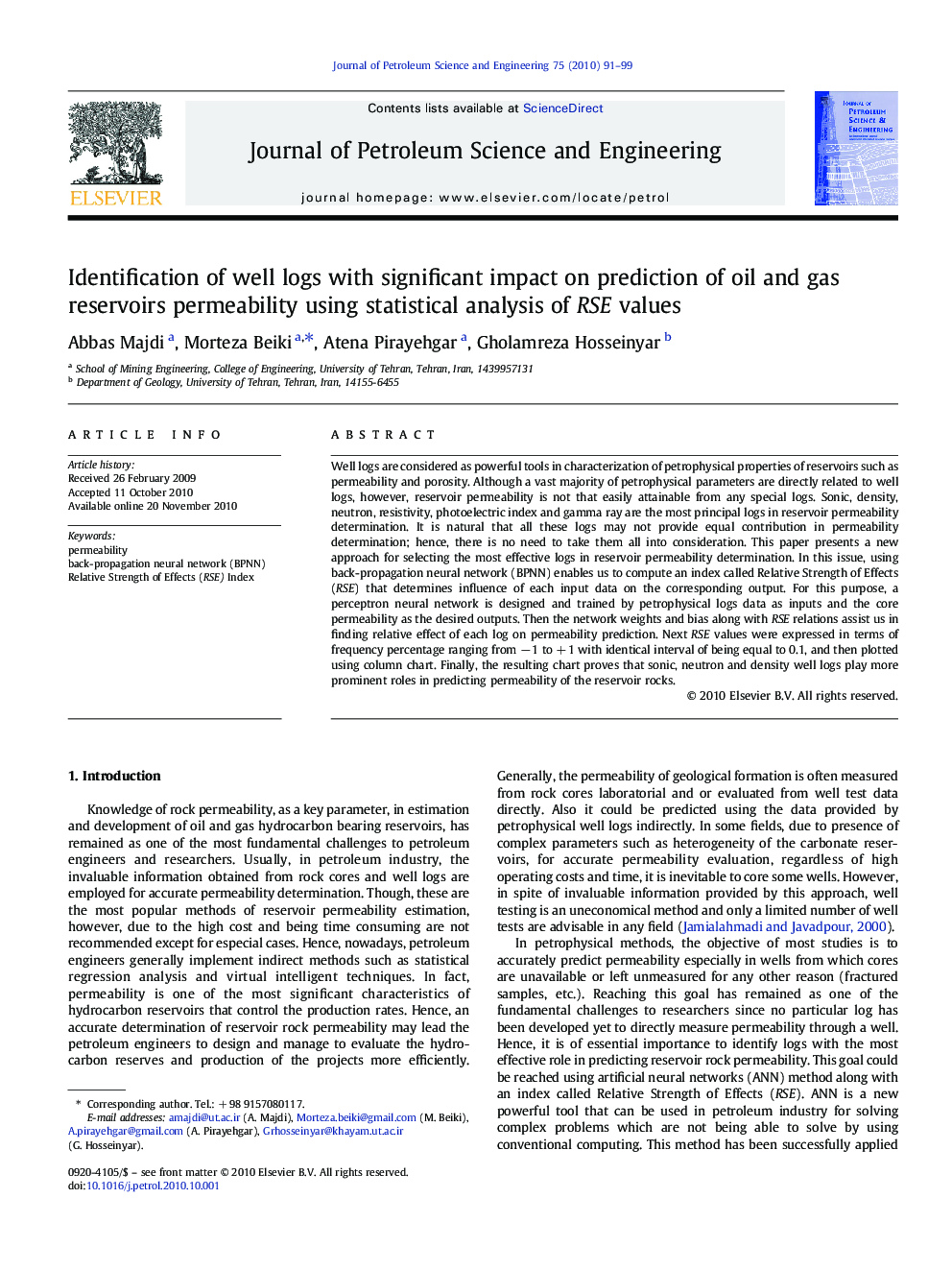| Article ID | Journal | Published Year | Pages | File Type |
|---|---|---|---|---|
| 8127548 | Journal of Petroleum Science and Engineering | 2010 | 9 Pages |
Abstract
Well logs are considered as powerful tools in characterization of petrophysical properties of reservoirs such as permeability and porosity. Although a vast majority of petrophysical parameters are directly related to well logs, however, reservoir permeability is not that easily attainable from any special logs. Sonic, density, neutron, resistivity, photoelectric index and gamma ray are the most principal logs in reservoir permeability determination. It is natural that all these logs may not provide equal contribution in permeability determination; hence, there is no need to take them all into consideration. This paper presents a new approach for selecting the most effective logs in reservoir permeability determination. In this issue, using back-propagation neural network (BPNN) enables us to compute an index called Relative Strength of Effects (RSE) that determines influence of each input data on the corresponding output. For this purpose, a perceptron neural network is designed and trained by petrophysical logs data as inputs and the core permeability as the desired outputs. Then the network weights and bias along with RSE relations assist us in finding relative effect of each log on permeability prediction. Next RSE values were expressed in terms of frequency percentage ranging from â 1 to + 1 with identical interval of being equal to 0.1, and then plotted using column chart. Finally, the resulting chart proves that sonic, neutron and density well logs play more prominent roles in predicting permeability of the reservoir rocks.
Related Topics
Physical Sciences and Engineering
Earth and Planetary Sciences
Economic Geology
Authors
Abbas Majdi, Morteza Beiki, Atena Pirayehgar, Gholamreza Hosseinyar,
